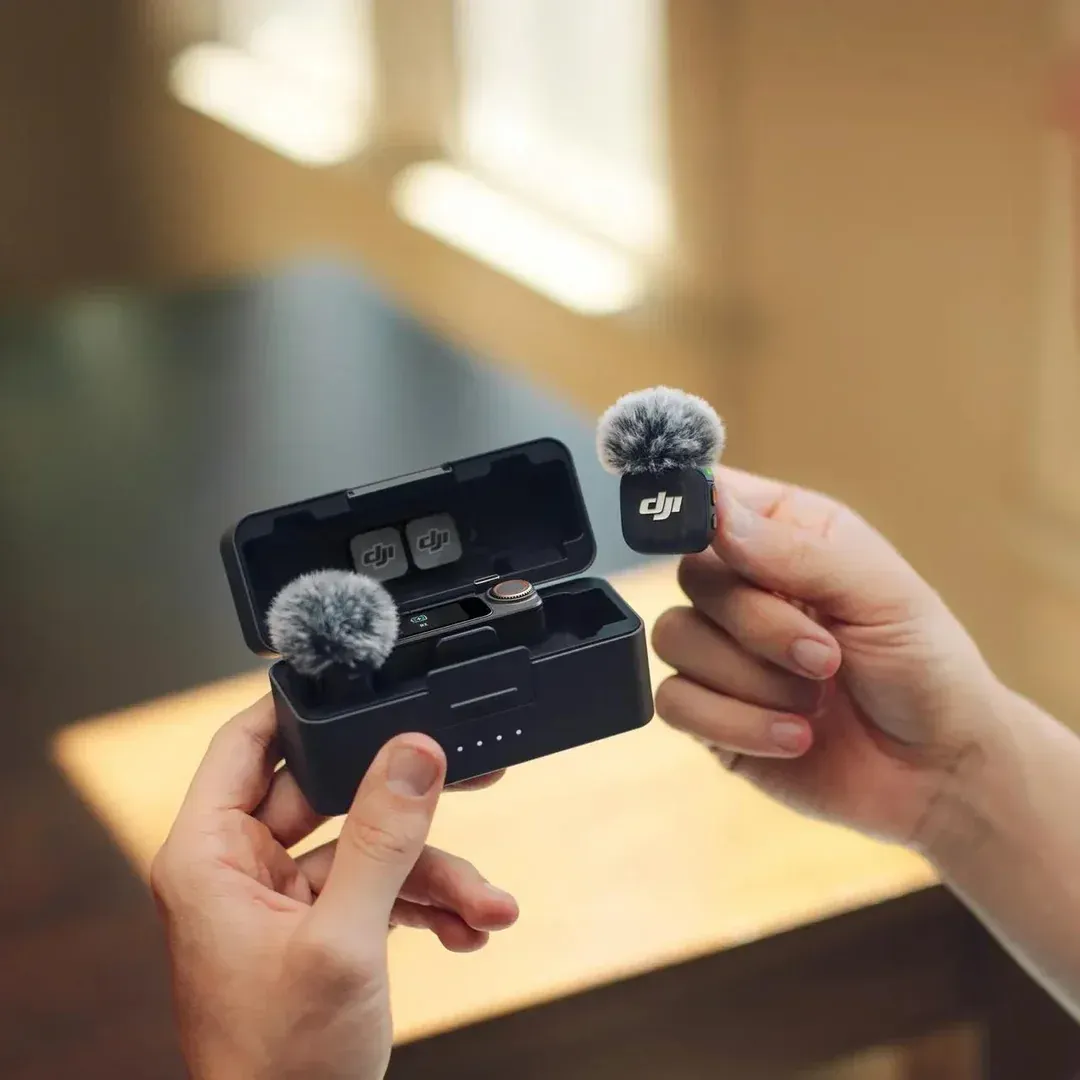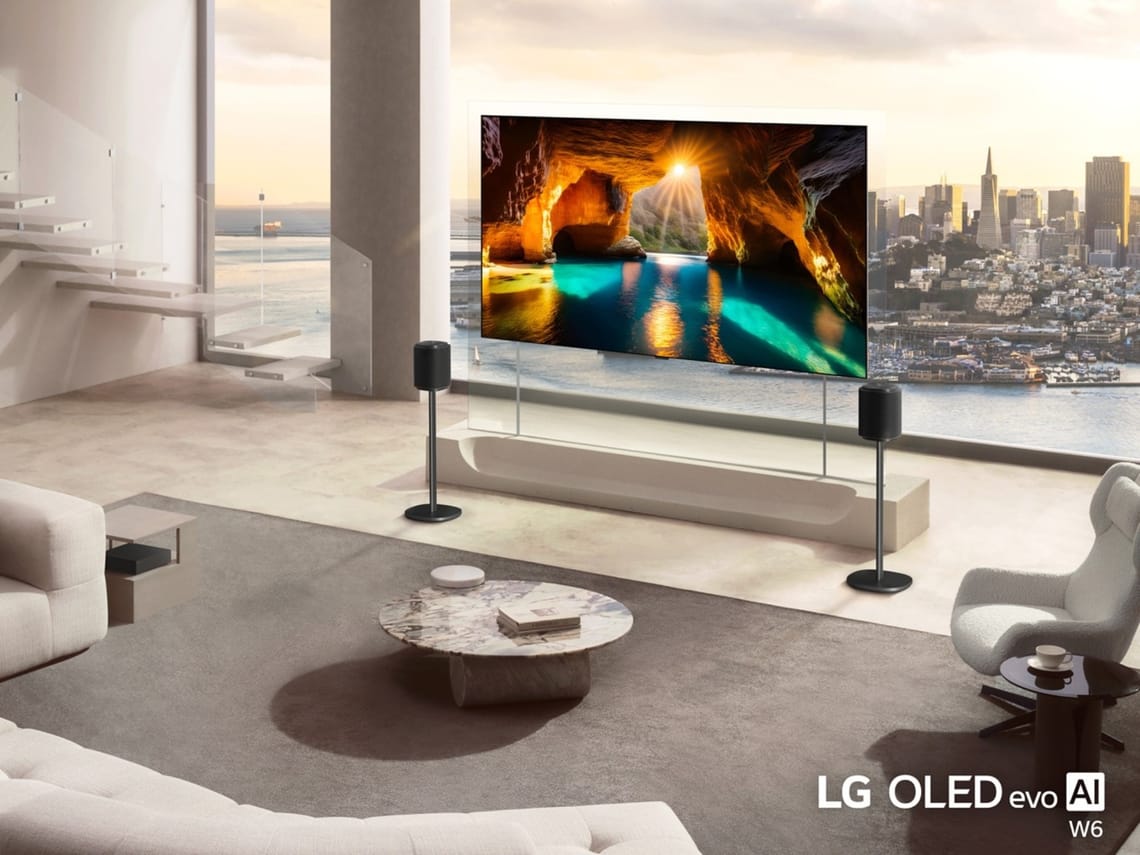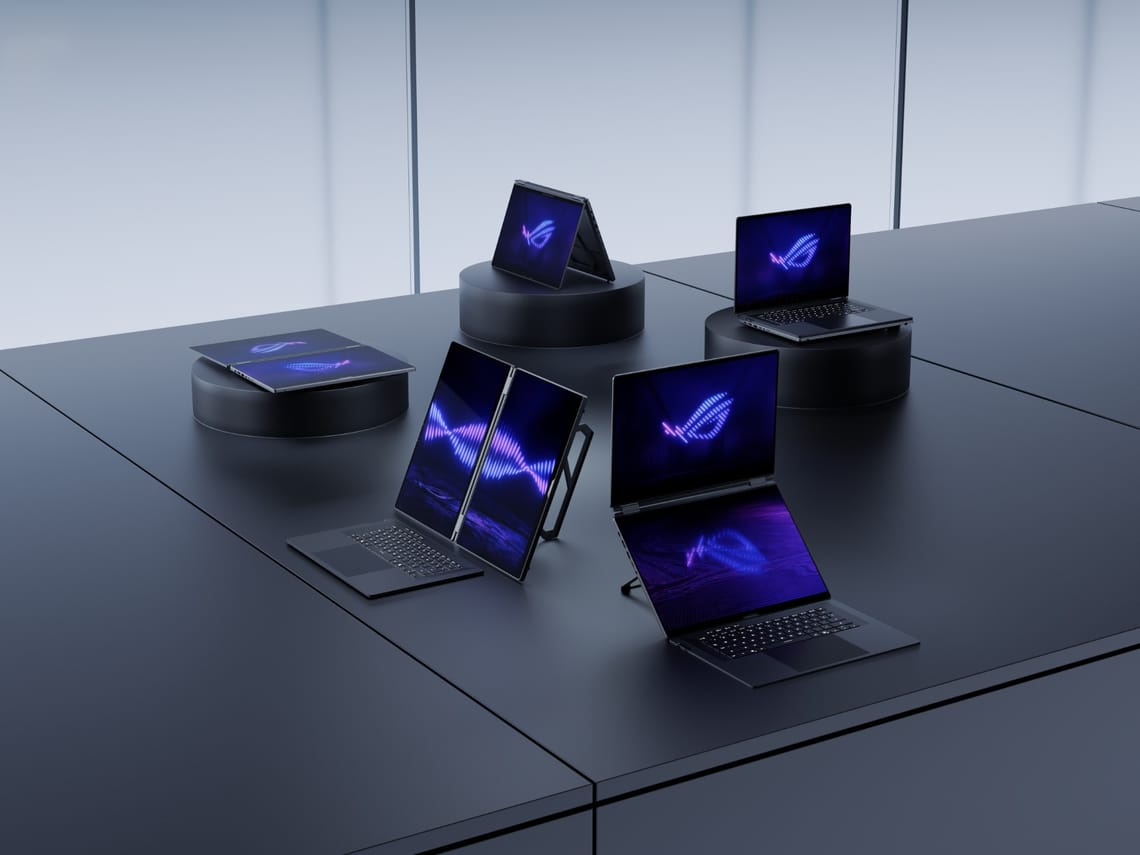DJI Mic 3 is a small, truly wireless mic kit for cameras and phones. It records clean audio, even in busy spaces. You get 32-bit float safety, adaptive gain, timecode, and support for up to four transmitters.
DJI lists kits from a single-mic set to a two-mic bundle with a charging case. Global pricing starts at USD $219 for 1 TX + 1 RX and USD $329 for 2 TX + 1 RX + case.
What’s new and why it matters
In brief: improved sound quality, more stable levels, and a more straightforward setup.
- 32-bit float and dual-file recording for headroom and a backup take
- Adaptive Gain Control with Automatic and Dynamic Modes
- Three voice tone presets plus two-level noise cancelling
- Four-channel output with select Sony bodies or software
- 400 m max transmission, dual-band 2.4/5 GHz, Bluetooth 5.4
- Timecode in/out for clean sync
DJI adds real safety to small-rig audio. 32-bit float keeps peaks from clipping. Dual-file capture saves both the original and an enhanced version of the track. Adaptive gain helps in adjusting soundscapes, while voice presets and noise cancellation keep dialogue clear without distortion. Four-channel output is the big workflow win for panel chats and multi-cam shoots. Range, stability and Bluetooth support round it out.
Design and connections
A tiny RX goes on your camera or into a USB-C port. TX units clip on and can record internally.
- Receiver: 1.1-inch AMOLED plus a dial for fast control
- Camera: 3.5 mm TRS locking cable in the box
- Mobile: USB-C adapter included
- Timecode: LTC in/out over 3.5 mm and USB-C
Controls live on the RX screen and in the DJI Mimo app. The kit ships with cables, windshields, magnets, and clips, so you can start quickly. Timecode support reduces post-sync drift to under a frame in 24 hours in spec conditions.
Recording and presets
You tune the sound to the voice and the room, not the other way around.
- 32-bit float or 24-bit, 48 kHz
- Dual-file capture: original + algorithm-enhanced
- Voice tone: Regular, Rich, Bright
- Noise cancelling: Basic and Strong
- Low-cut, and adaptive gain modes (Automatic, Dynamic)
For talking heads, start with Regular and Basic noise cancelling. In loud streets, switch to Strong and Automatic. For podcasts or controlled sets, use Dynamic for consistent loudness. The internal storage is 32 GB, offering up to 57.3 hours at 24-bit single file or 43 hours at 32-bit float single file.
Channels, range and device support
Beyond the usual mono/stereo, Mic 3 scales.
- Up to four transmitters into one receiver
- Up to eight receivers in a linked setup
- Four-channel output with supported Sony cameras via DJI Mic Series Camera Adapter, or with computer software over USB
- 400 m max distance in clean RF conditions; strong anti-interference with 2.4/5 GHz hopping
- Bluetooth 5.4; direct pairing with select DJI cameras (Osmo 360, Osmo Action 5 Pro, Osmo Action 4, Osmo Pocket 3)
This is where it starts to replace bigger rigs. You can run panel interviews with isolated tracks, then decide the mix later. Note that a four-channel output needs compatible Sony models or software, and accessories are separate.
Battery life and charging case
It lasts a full shoot day with the case.
- TX: up to 8 hours
- RX: up to 10 hours
- Case: up to 28 hours total
- 5-minute quick charge ≈ 2 hours of use
Power-saving settings help when you work long events. You can also record while your phone is charging. For UAE creators filming outdoors, the operating range and case life cover weddings, conferences, and nighttime shoots without the need for a wall socket.
Pricing, kits and UAE availability
Kits and modules are simple to parse.
- 1 TX + 1 RX: AED 808.50
- 2 TX + 1 RX + Charging Case: AED 1,258.95
- Extra transmitter: AED 388.50
Expect UAE retailers to carry the kits soon after today’s global launch
Specs at a glance
The essentials creators ask for.
- TX: 16 g, RX: 25.1 g
- 48 kHz sampling; 24-bit or 32-bit float
- Omnidirectional capsules; max SPL 126 dB at 1% THD
- Internal TX storage: 32 GB
- Bluetooth 5.4
- Timecode: LTC in/out; supported frame rates include 23.98, 24, 25, 29.97, 29.97DF, 30, 50, 60
These figures match DJI’s published specs and give you the headroom to record in quiet rooms and noisy venues.
FAQs
Does the DJI Mic 3 do 32-bit float internal recording?Yes. It supports 24-bit and 32-bit float. Dual-file capture saves both the original and an enhanced take.
Can I get four separate audio tracks in-camera? With select Sony cameras plus DJI’s Mic Series Camera Adapter, the RX can output four channels. You can also get four tracks via USB into supported computer software. Check DJI’s compatibility list.
What’s the real-world battery life? DJI rates the transmitter at 8 hours and the receiver at 10 hours, with a total of up to 28 hours using the charging case. Quick charging provides approximately two hours of use from a five-minute top-up. Actual life varies with features like noise cancelling and Lossless Audio.
Subscribe to our newsletter to get the latest updates and news








Member discussion